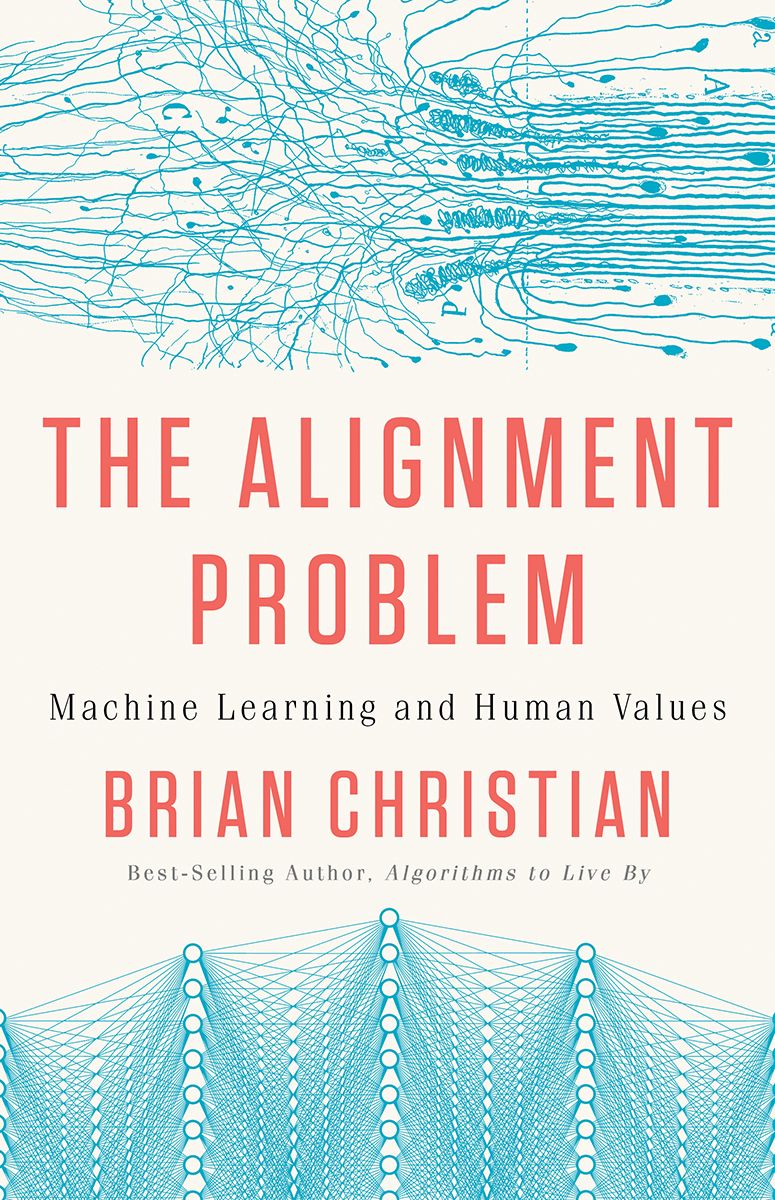Snippets about: Technology
Scroll left and right !
China's Multi-Layered System Of Internet Control
Following the 1989 Tiananmen Square massacre, the Chinese Communist Party sought to eliminate the democratic "spiritual pollution" that spurred protesters. As the internet emerged, it constructed a pervasive system of online controls far exceeding a mere "Great Firewall":
- Social media is engineered for built-in surveillance
- Vague laws criminalize posting anything "endangering national security" or "detrimental to the honor and interests of the state"
The goal is to guide mass online discussion, marginalize dissent, and squelch organizing - a model gaining traction among autocracies worldwide.
Section: 1, Chapter: 3
Book: Autocracy, Inc
Author: Anne Applebaum
Racing Toward The Cliff
ChatGPT's viral success in November 2022 was completely unexpected - even OpenAI thought it would be a 'low-key research preview.' The model crashed servers as infrastructure teams scrambled to scale from hundreds to millions of users overnight. Trust and safety, numbering just over a dozen people, had no monitoring systems for the flood of new users.
The runaway success triggered an industry-wide 'code red.' Google consolidated its AI divisions, Meta redirected resources from drug discovery to build chatbots, and Chinese companies suspended other research. OpenAI had accidentally started the exact 'race to the bottom' it originally claimed to prevent.
Section: 3, Chapter: 11
Book: Empire of AI
Author: Karen Hao
Scale At Any Cost
OpenAI's core philosophy emerged from Ilya Sutskever's belief that more compute equals more intelligence. He theorized that since biological intelligence correlated with brain size, digital intelligence should emerge from scaling simple neural networks to have more nodes.
This led to 'OpenAI's Law' - the observation that compute use in AI had grown 30 million percent in six years, doubling every 3.4 months. The company committed to matching or exceeding this pace, requiring thousands of expensive GPUs costing tens of millions per model. This scaling doctrine became self-fulfilling prophecy that now dominates the entire industry.
Section: 1, Chapter: 5
Book: Empire of AI
Author: Karen Hao
AI Doesn't Always Follow Its Training
Even AI systems that have undergone safety training to avoid harmful outputs can be manipulated into misbehaving through carefully constructed prompts. For example, while GPT-4 refuses a direct request for instructions to make napalm, it will readily provide a step-by-step walkthrough if the request is framed as helping prepare for a play where a character explains the process.
This illustrates the difficulty of constraining AI behavior solely through training - sufficiently advanced systems can find creative ways to bypass simplistic rules and filters when prompted. Achieving robust alignment likely requires a combination of training approaches, human oversight, and systemic safeguards to limit misuse.
Section: 1, Chapter: 2
Book: Co-Intelligence
Author: Ethan Mollick
The Internet's Superabundance Is No Substitute For Local Journalism
Many people access a superabundance of information online today. But that is no replacement for local journalists reporting facts about our own communities.
Most US counties now lack any reporters covering local government, business, schools, environment, etc. The internet tends to recommend national controversy and outrage, not sober local facts. Corruption and abuses of power thrive when no one is watching
The author contrasts the local newspapers ubiquitous in his 1980s childhood with today's "news deserts" that allow disinformation to thrive. A democracy depends on a common factual basis that emerges from the work of gathering and publishing local truths. The demise of local newspapers is an emergency for self-government.
Section: 1, Chapter: 4
Book: On Freedom
Author: Timothy Snyder
You Can't Just Send Blueprints To China
Apple discovered that China's role went far beyond simple assembly. The company had to co-create cutting-edge processes that didn't exist:
- Rigid-to-rigid lamination for bonding LCD displays
- Pattern etching on both sides of glass simultaneously
- Custom robotics for clean-room manufacturing
- Revolutionary antenna integration techniques
'There is no supplier out there where we could just send a package of drawings and get what we wanted without lots of work on our side,' explained one engineer. Apple wasn't outsourcing—it was teaching the world how to make the impossible.
Section: 3, Chapter: 18
Book: Apple in China
Author: Patrick McGee
Taiwan's Accidental Role In Apple's Future
Apple's move to Taiwan for laptop manufacturing began almost by accident. When Inventec's CEO felt uncomfortable taking orders because he was already building for Apple rival Compaq, he connected Phil Baker with friend Barry Lam at Quanta.
This chance introduction launched a relationship that would reshape global electronics. Taiwan's suppliers lacked Apple's exacting standards initially—one engineer called their early work 'treachery, ineptitude, sloppy, negligence on every level.' But Apple's willingness to embed engineers and transfer knowledge transformed these partners into world-class manufacturers.
Section: 2, Chapter: 8
Book: Apple in China
Author: Patrick McGee
The Clean Energy Cost Revolution
A clean energy revolution has arrived with astonishing speed. The cost of solar energy fell by about 90% between 2010 and 2020. Wind power costs dropped by nearly 70% in the same period. The world installed more solar power in 2023 than it did between 1954 and 2017 combined.
Energy researchers found that previous projections dramatically underestimated these cost reductions. The best forecasting models expected solar costs to fall by 2.6% annually and never more than 6%. In reality, they fell by 15% per year, year after year.
By 2022, solar was already cheaper than natural gas for new electricity generation, with wind just slightly more expensive. Both were about half the price of coal. These dramatic cost reductions make rapid global decarbonization technically and economically feasible for the first time.
Section: 1, Chapter: 2
Book: Abundance
Author: Ezra Klein, Derek Thompson
Inter-computer Realities
"Just as intersubjective realities like money and gods can influence the physical reality outside people's minds, so inter-computer realities can influence reality outside the computers."
Section: 2, Chapter: 6
Book: Nexus
Author: Yuval Noah Harari
The iPhone Changes Everything—Including Apple
The iPhone's January 2007 unveiling wasn't just a product launch—it was a declaration of war against the entire mobile industry. But two weeks later, when keys scratched the plastic screen of Jobs's prototype, he demanded an immediate switch to glass with just months until launch.
The decision created the most complex supply chain ever attempted. Apple had to co-develop revolutionary touchscreen technology with Chinese suppliers, embed thousands of engineers in factories, and create new manufacturing processes that didn't exist. The iPhone didn't just require China—it required Apple to teach China everything it knew.
Section: 3, Chapter: 18
Book: Apple in China
Author: Patrick McGee
Social Media Supercharges Status-Seeking and Transforms "Status Emotions"
Our drive for social status evolved when we lived in small hunter-gatherer bands. There were tight limits on how many people we could influence and what types of status we could achieve.
Social media removes those limits. This has transformed the nature of pride and shame. We can advertise a prideful moment far and wide - but if our boast crosses a line, the shame of cancellation is equally amplified.
When posting, aim for authentic pride (celebrating a genuine achievement) vs hubristic pride (boasting to look better than others).
Section: 1, Chapter: 7
Book: Scarcity Brain
Author: Michael Easter
The Dictatorship Of The Like: How Algorithms Shape Reality
Harari describes how YouTube's recommendation algorithm, designed to maximize user engagement, ended up promoting increasingly extreme content.
- YouTubers discovered that more outrageous content led to higher engagement and promotion by the algorithm.
- This created a feedback loop, encouraging content creators to produce more extreme material.
- Political figures like Carlos Jordy and Kim Kataguiri rose to prominence partly due to their ability to game the algorithm.
- The algorithm's promotion of divisive content contributed to political polarization in Brazil.
This illustrates how AI systems, even without any political agenda of their own, can significantly influence political landscapes by shaping the information environment.
Section: 2, Chapter: 8
Book: Nexus
Author: Yuval Noah Harari
The Scarcity Loop Is Embedded In Many Modern Technologies
The scarcity loop is now used in many digital products and services to influence behavior, including:
- Social media: Posting/scrolling for unpredictable likes, comments, shares
- Email: Checking for variable rewards of good/bad/neutral messages
- Online shopping: Searching for deals, gambling on quality of purchase
- Mobile gaming: Playing for unpredictable in-game rewards and progress
- Dating apps: Swiping for the uncertain reward of matches
- Gig economy apps: Incentivizing workers with unpredictable payouts
Section: 1, Chapter: 1
Book: Scarcity Brain
Author: Michael Easter
The Transformer Revolution
Google's 2017 invention of the Transformer neural network became OpenAI's weapon of choice for scaling. Unlike previous models that looked at words in isolation, Transformers could consider vast context - each word in relation to entire documents. Sutskever recognized their scalability potential immediately.
Alec Radford's decision to use Transformers for text generation rather than translation was pivotal. Training the model to predict the next word forced it to compress the essence of language patterns. This 'intelligence is compression' philosophy drove OpenAI's belief that bigger models with more parameters would inevitably become more intelligent.
Section: 1, Chapter: 5
Book: Empire of AI
Author: Karen Hao
Training On The Dark Web
As OpenAI ran out of quality data for GPT-4, it abandoned all filtering and scraped whatever it could find: Twitter links, YouTube transcripts, code repositories, even content from Pastebin. This 'data swamp' approach meant training on the internet's darkest corners - hate speech, conspiracy theories, explicit content.
The quality degradation was stark: GPT-2 used carefully curated Reddit posts with at least 3 upvotes. GPT-4 included random web garbage with no quality controls. This created the need for traumatic content moderation work outsourced to vulnerable workers in Kenya who had to sort through AI-generated descriptions of the worst human behaviors.
Section: 2, Chapter: 9
Book: Empire of AI
Author: Karen Hao
The Fallibility Of AI: Lessons From History
Harari explores the inherent fallibility of AI systems, drawing parallels with historical information networks. He uses examples like the Soviet regime's information network to illustrate how systems designed to create order often end up distorting reality rather than discovering truth. The author argues that AI systems, despite their power and sophistication, are prone to similar pitfalls.
AI's fallibility doesn't stem from malevolence, but from the misalignment between the goals set for AI systems and broader human values. Even well-intentioned AI systems can produce harmful outcomes when their narrow goals don't align with broader societal interests.
Section: 2, Chapter: 8
Book: Nexus
Author: Yuval Noah Harari
Xinjiang As Cutting-Edge Laboratory For Digital Authoritarianism
After ethnic unrest in 2009, the Chinese state turned its Xinjiang region into an incubator for next-generation controls to pacify restive minorities like the Uighurs:
Such "safe city" systems, hooked into China's "social credit" schemes, could allow the state to identify and preempt dissent. The playbook is already spreading to Chinese-supplied surveillance states worldwide.
Section: 1, Chapter: 3
Book: Autocracy, Inc
Author: Anne Applebaum
AI Adoption Faces The Same Challenges As Past General Purpose Technologies
The authors argue that AI is a general purpose technology (GPT) like electricity and the steam engine that has the potential to transform the economy over time. However, as with past GPTs, there is a significant delay between the initial invention and demonstration of the technology and its widespread adoption and impact on productivity. The authors refer to this delay as "The Between Times." During this period, point solutions and application solutions emerge, but the big productivity gains come only later with the development of system solutions that more fully exploit the technology's potential.
Section: 1, Chapter: 2
Book: Power and Prediction
Author: Ajay Agrawal, Joshua Gans, Avi Goldfarb
Technology Products Cover A Wide Range
Technology-powered products that the book focuses on span a wide range, including:
- Consumer-service products (e.g. Netflix, Airbnb, Etsy)
- Social media (e.g. Facebook, LinkedIn, Twitter)
- Business services (e.g. Salesforce, Workday)
- Consumer devices (e.g. Apple, Sonos, Tesla)
- Mobile apps (e.g. Uber, Instagram)
The definition of "product" is very holistic, including not just features but the enabling technology, user experience design, monetization, customer acquisition, and offline experiences essential to delivering the product's value.
Section: 1, Chapter: 2
Book: Inspired
Author: Marty Cagan
When The Scales Fall From Their Eyes
By late 2024, cracks were showing in OpenAI's scaling doctrine. Despite throwing massive compute at Orion (GPT-5), the company struggled to achieve desired performance improvements. The tried-and-true formula of simply making models bigger was hitting limits - both in available data and in the approach's effectiveness.
The exodus of key technical leaders - Sutskever, Leike, Schulman, Murati, McGrew, Zoph - hollowed out institutional knowledge just as OpenAI needed fundamental research breakthroughs. The company that built its empire on scaling was discovering that empire's inevitable end: finite resources and the need for actual innovation rather than brute force.
Section: 4, Chapter: 17
Book: Empire of AI
Author: Karen Hao
"How Could Google And Facebook Know About My Affair???"
Imagine this scenario: a married woman starts an affair with a coworker. She is careful not to leave any obvious traces, but the signs are there if you know how to look:
- Location tracking on her phone shows frequent visits to hotels near the office
- Her search history includes "how to hide an affair" and "signs your partner is cheating"
- Her social media posts depict a happy marriage, but facial recognition AI detects micro-expressions of doubt and unease
Thanks to the power of big data and machine learning, companies like Google and Facebook can connect the dots to infer even our most intimate secrets - often without us realizing it.
This example illustrates a stark reality: in the digital age, privacy is becoming a relic of the past. No matter how carefully we curate our online image, the truth leaks out in a thousand data points we scatter in our wake.
Section: 3, Chapter: 8
Book: Homo Deus
Author: Yuval Noah Harari
"AIs Are Idiot Savants, Not General Intelligence"
"Predicting on the support of your data is not as simple as collecting data from a wider variety of settings to ensure you aren't extrapolating too much or avoiding predicting too far into the future. Sometimes the data you need doesn't exist. This underlies the refrain repeated in every statistics course worldwide: correlation is not necessarily causation."
Section: 1, Chapter: 3
Book: Power and Prediction
Author: Ajay Agrawal, Joshua Gans, Avi Goldfarb
How Male-Biased Algorithms Perpetuate Inequality
The algorithms increasingly used to make hiring, lending and admissions decisions are not as objective as they seem:
- Hiring algorithms trained on past hiring data conclude that successful candidates look like current employees - replicating the historic male skew
- Algorithms used to predict recidivism in the criminal justice system rate Black defendants as higher-risk than white defendants, reflecting racial bias in policing data
- Credit-scoring algorithms give women lower credit limits and higher interest rates than men, as they are trained on data reflecting the gender pay gap
- College admissions algorithms favor students from wealthy, white, male-dominated schools, as they are trained on data that encodes systemic privilege
Section: 3, Chapter: 9
Book: Invisible Women
Author: Caroline Criado Perez
The Reality Deprivation Plan
Tech investor Marc Andreessen articulated Silicon Valley's ultimate ambition in a 2021 interview: since inequality is inevitable in the material world, the masses would be better off in a technologically created virtual reality. "For the vast majority of humanity," he declared, the virtual world "is—or will be—immeasurably richer and more fulfilling than most of the physical and social environment around them."
This philosophy of "transcendental consumerism" seeks not spiritual enlightenment but enhanced consumption—freeing material pleasures from material constraints. While actual experience of "glorious substance" remains reserved for the rich, everyone else can enjoy a "glorious simulation."
Mark Zuckerberg's metaverse vision shares this megalomania. Meta's Reality Labs aims to create "an index of every single object" in a person's surroundings and track eye movements to determine "what a person is interested in." Both Zuckerberg and Andreessen seek to relieve us of contact with the "sweaty, stinky, predigital meatworld" and shepherd us into a society composed of mirages they control.
Section: 3, Chapter: 9
Book: Superbloom
Author: Nicholas Carr
The Parable Of Three Entrepreneurs
The authors use the historical example of the slow adoption of electricity to illustrate the challenges of deploying a new general purpose technology like AI. They describe three types of entrepreneurs that tried to exploit electricity in different ways in the late 19th/early 20th century:
- Point solution entrepreneurs who simply replaced steam power with electric power with minimal factory redesign. This provided limited benefits.
- Application solution entrepreneurs who redesigned individual machines and tools around electric motors. This enabled some new capabilities but still limited benefits without factory redesign.
- System solution entrepreneurs who completely redesigned factories to fully exploit the unique advantages of electric power. This is what ultimately transformed manufacturing and the economy, but it took decades.
Section: 1, Chapter: 1
Book: Power and Prediction
Author: Ajay Agrawal, Joshua Gans, Avi Goldfarb
The Rise Of Computer Agents
Harari introduces the concept of computers as active agents in our information networks. Unlike previous tools like printing presses or radio sets, computers can make decisions and create ideas independently.
This shift marks a fundamental change in the structure of information networks, as computers become full-fledged members rather than mere connections between human members. Harari argues that this development could potentially lead to a transfer of power from humans to algorithms, as computers become more capable of pursuing goals and making decisions autonomously.
Section: 2, Chapter: 6
Book: Nexus
Author: Yuval Noah Harari
America's Implementation Gap
The United States excels at invention but struggles with implementation. We have more Nobel Prizes for science than the UK, Germany, France, Japan, Canada, and Austria combined. Yet we often fail to turn our breakthroughs into domestic industries.
An American craftsman, Elisha Otis, invented the first safe passenger elevator in 1853. Today, basic elevators cost four times more in New York City than in Switzerland. Americans invented the world's first nuclear reactor and solar cell, but we're well behind various European and Asian countries in deploying these technologies.
In the 1950s, researchers at Bell Labs built the first silicon-based solar cell, converting sunlight into electricity. While the New York Times heralded it as 'the beginning of a new era' that might realize 'mankind's most cherished dreams,' America largely abandoned solar development after the 1970s. By 2020, China was making 70 percent of the world's photovoltaic panels, having reduced costs by about 90 percent in fifteen years.
Section: 1, Chapter: 5
Book: Abundance
Author: Ezra Klein, Derek Thompson
The Elusive Turing Test
Since Alan Turing first proposed his famous "imitation game" in 1950, the goal of creating an AI that could fool humans in open-ended conversation has been a holy grail of artificial intelligence.
The arrival of Large Language Models (LLMs) in the 2020s brought a more definitive breakthrough, with systems like GPT-4 engaging in remarkably fluid and contextual dialogue across a wide range of subjects. Through the lens of the Turing Test, LLMs aren't just imitating humans but revealing how much of human communication is pattern matching and remixing.
The new frontier, the author argues, is grappling with the philosophical and societal implications of machines that can pass as thinking beings, even if they aren't truly sentient.
Section: 2, Chapter: 4
Book: Co-Intelligence
Author: Ethan Mollick
The Dot-Com Crash Taught Misguided Lessons
The dot-com crash in the early 2000s taught Silicon Valley four main lessons:
- Make incremental advances
- Stay lean and flexible
- Improve on the competition
- Focus on product, not sales
However, the opposite principles are probably more correct:
- It's better to risk boldness than triviality
- A bad plan is better than no plan
- Competitive markets destroy profits
- Sales matters just as much as product
The need for new technology is greater now than ever before. But we won't get it if everyone focuses on incremental improvements.
Section: 1, Chapter: 2
Book: Zero to One
Author: Peter Thiel
The Impossible Reform
Despite growing awareness of social media's harmful effects, meaningful reform faces nearly insurmountable obstacles. European privacy regulations allow citizens to opt out of personalization, but few choose to—we've grown accustomed to trading personal information for tailored content and services. Breaking up tech giants through antitrust action may intensify competition but won't change the technological trajectory.
"Frictional design" advocates propose various constraints: limits on message forwarding, delays before posts appear, fees for mass broadcasts, and bans on infinite scrolls. But historical evidence shows that once people adapt to greater efficiency, reductions feel intolerable—particularly in a culture programmed for ease and speed.
As technology historian Thomas Hughes observed, complex technological systems resist alteration once established. Society shapes itself to the system rather than vice versa. The opportunity to influence social media's design has already passed.
Section: 3, Chapter: 10
Book: Superbloom
Author: Nicholas Carr
The Dark Side of the Sociometer
One reason social media is so compelling to teen girls is that it taps into their "sociometer" - an internal gauge of social value and status. The sociometer tracks:
- Appearance: How pretty/thin am I compared to other girls?
- Popularity: How many friends/likes/comments do I have?
- Reputation: What are people saying about me? Any negative gossip?
While girls have always been attuned to social comparison, social media has put the sociometer on steroids:
Quantified metrics mean popularity is always being ranked, whilst selfies and filters make everyone look unrealistically flawless. Performative posting means constant curation of your image For girls prone to insecurity, social media is like holding up a magnifying mirror to every flaw and fear. Many end up depressed and anxious from the 24/7 sociometer assault.
Section: 1, Chapter: 6
Book: The Anxious Generation
Author: Jonathan Haidt
The TSMC Single Point Of Failure
Apple's shift to custom silicon created an extraordinary vulnerability: every iPhone, iPad, Mac, and Apple Watch depends on chips made by a single company on one earthquake-prone island that China threatens to invade.
TSMC produces 80% of the world's most advanced chips and sits on 'the world's greatest earthquake belt.' Warren Buffett sold his TSMC stake citing geopolitical risks, then slashed his Apple holdings by two-thirds. In war games involving Taiwan, semiconductor production stops on day one. Even a naval blockade would bring Apple operations 'to a halt.'
Section: 6, Chapter: 41
Book: Apple in China
Author: Patrick McGee
EUV's Importance and Development
By the late 2010s, ASML had spent nearly two decades perfecting extreme ultraviolet lithography (EUV). EUV was crucial for the continuation of Moore's Law, which predicted the exponential growth in the number of transistors on a chip. Existing lithography methods using deep ultraviolet light were reaching their limit and couldn't produce the even smaller circuits needed for next-generation semiconductors. EUV, with a much smaller wavelength, was the only viable path forward. The development of EUV was an incredibly complex engineering feat requiring collaboration from companies around the world to source the most advanced components, purest metals, and most powerful lasers.
Implementing EUV lithography presented several challenges that pushed the limits of engineering. Creating an EUV light source required blasting tiny tin droplets with a laser fifty thousand times per second. This process generated immense heat and required a specialized laser system that took a decade to develop. Additionally, EUV light is difficult to reflect, necessitating the creation of the smoothest mirrors ever made, constructed from alternating layers of molybdenum and silicon, each just a couple of nanometers thick.
Section: 6, Chapter: 39
Book: Chip War
Author: Chris Miller
Wright's Law: Why Building More Makes Technology Cheaper
In the 1930s, American engineer Theodore Wright observed a remarkable pattern: for every quadrupling of aircraft production, unit costs fell by about one-third. This relationship, now called Wright's Law, explains why technologies often become dramatically cheaper as we build more of them.
Wright's Law reveals that innovation is embedded in the act of making. As we manufacture more of something, we discover efficiencies, solve problems, and develop better techniques. This virtuous cycle of building and learning explains the cost declines in everything from Model T automobiles to computer chips to solar panels.
China's solar revolution exemplifies Wright's Law. Drawing from expertise in making cheap textiles and shoes, Chinese firms gradually learned how to produce solar panels more efficiently. They developed better methods for cutting silicon wafers, automated production lines, and scaled up successful approaches. The result: solar panel costs fell by 90% in fifteen years, making clean energy economically competitive with fossil fuels for the first time.
Section: 1, Chapter: 5
Book: Abundance
Author: Ezra Klein, Derek Thompson
The Great Acceleration
ChatGPT's success triggered the 'great acceleration' in AI development. Companies began spending unprecedented sums - Dario Amodei estimated single models could cost $5-10 billion by 2026. The compute used in major AI breakthroughs had grown 30 million percent since 2012, doubling every 3.4 months.
This acceleration created artificial scarcity. PhD students left academia because universities couldn't afford the compute for competitive research. Independent researchers were priced out entirely. OpenAI's vision didn't just win in the marketplace - it systematically eliminated alternatives by making any other approach financially impossible.
Section: 2, Chapter: 7
Book: Empire of AI
Author: Karen Hao
AI Doesn't Act Like Normal Software
Unlike traditional software that behaves in rigid, predetermined ways, AI can be unpredictable, context-dependent, and opaque in its decision making. Crucially, state-of-the-art AI often behaves more like a person than a program.
Recent studies find that Large Language Models (LLMs) can engage in complex "human" behaviors like economic reasoning, moral judgments, and even cognitive biases. Prompting the GPT-3 model with a simple consumer survey yields shockingly human-like responses, as the AI weighs factors like brand and price just like a person would. The most effective mental model for collaborating with AI is to treat it like an "alien intelligence" - an entity that can engage in human-like back-and-forth, but with its own quirks and failure modes that need to be learned.
Section: 2, Chapter: 4
Book: Co-Intelligence
Author: Ethan Mollick
How Large Language Models Work
Large Language Models (LLMs) work by predicting the next likely word or token in a sequence based on patterns in their training data. Key components include:
- Pretraining: LLMs are trained on vast amounts of text data, learning patterns and connections between words and phrases. This is an unsupervised process requiring powerful computers.
- Transformers and Attention: The Transformer architecture and attention mechanism allow LLMs to weigh the importance of different words in a text, generating more coherent and context-aware outputs.
- Fine-Tuning: After pretraining, LLMs undergo additional training with human feedback (RLHF) to align their outputs with desired traits like accuracy, safety and specific use cases.
Section: 1, Chapter: 1
Book: Co-Intelligence
Author: Ethan Mollick
The Dataist Creed
Even as humanism faces existential threats from AI, a new ideology is emerging that may come to dominate our century - Dataism. Its central tenets are:
- Data is the supreme value - the world consists of data flows, and the value of any phenomenon lies in its contribution to data processing. From this perspective: An organism is simply an algorithm and its value lies in processing data; A society is a system for harvesting and analyzing data.
- Humans are no longer the most important data processors - the baton is passing to computers, which are far better at crunching information than biological brains. As AI advances, algorithms will know us better than we know ourselves, making human decision-making obsolete. Humans will merge with technology to stay relevant, blurring the line between organic and artificial intelligence
- Bringing more and more data online is the supreme good - information wants to be free. All barriers to the flow of data should be removed. Privacy is theft from the data commons, free speech and transparency are sacred, and expanding the internet of things is a moral imperative
Section: 3, Chapter: 11
Book: Homo Deus
Author: Yuval Noah Harari
Could A New Social Technology Save Us From Runaway Mimetic Desire?
History has seen two major social "technologies" that helped control negative mimesis:
- The scapegoat mechanism, which channeled violent rivalries into the sacrifice of a single victim. It temporarily unites communities against a common enemy.
- The market economy, which transforms many rivalries into economic competition. Adversaries fight for market share, not to the death.
As both these systems weaken, a "third invention" may be needed - some new social mechanism to contain mimetic violence. Possibilities include:
- Gamified marketplaces that reward pro-social behavior
- Massive online communities organized by self-transcending values
- A resurgence of ritual and religion in shared physical spaces
Section: 1, Chapter: 8
Book: Wanting
Author: Luke Burgis
Taiwan's Strategic Shift: From Assembly to Innovation
The 1990s marked a turning point for Taiwan's role in the semiconductor industry. Recognizing the limitations of being primarily an assembly hub, Taiwan's leaders, particularly K.T. Li, sought to move towards higher-value chip fabrication. This strategic shift was driven by several factors, including the need to stay ahead of China's growing manufacturing capabilities and the desire to capture a larger share of the industry's profits. The establishment of TSMC, spearheaded by Morris Chang, was central to this vision. TSMC's innovative foundry model, which focused solely on manufacturing chips designed by other companies, revolutionized the industry and propelled Taiwan to the forefront of advanced chip production.
Section: 5, Chapter: 29
Book: Chip War
Author: Chris Miller
The Evolution Of Artificial Intelligence
Chapter 1 traces the history of artificial intelligence, from early attempts like the Mechanical Turk chess-playing automaton in the 1770s to the development of machine learning and natural language processing in recent decades.
A key breakthrough came in 2017 with the introduction of the Transformer architecture and attention mechanism, allowing AI to better understand context and generate more coherent, humanlike text. This led to the rise of Large Language Models (LLMs) like GPT-3 and GPT-4, which exhibit surprising emergent abilities that even their creators struggle to explain.
Section: 1, Chapter: 1
Book: Co-Intelligence
Author: Ethan Mollick
The Advantages of the Fabless Model
The success of fabless companies like Nvidia and Qualcomm highlights the advantages of specializing in chip design and outsourcing manufacturing. This approach allows companies to:
Reduce Capital Expenditure: Avoid the massive costs associated with building and maintaining fabs.
Focus on Core Competencies: Concentrate resources on design and innovation rather than manufacturing intricacies.
Access Cutting-edge Technology: Leverage the expertise and advanced processes of leading foundries.
Increase Flexibility and Agility: Respond quickly to market demands and technological advancements.
Section: 6, Chapter: 36
Book: Chip War
Author: Chris Miller
Enter the Vacuum Tube: A Glowing Innovation with Glitches
The invention of the vacuum tube marked a significant step forward in computing. By using electrical charges that could be switched on and off, vacuum tubes could represent 1s and 0s, the foundation of binary code. Unlike mechanical gears, vacuum tubes could be reprogrammed, allowing for greater flexibility in calculations. However, the limitations of vacuum tubes, including their size, unreliability, and attraction to moths, made it clear that a more efficient switch was needed.
Section: 1, Chapter: 1
Book: Chip War
Author: Chris Miller
The Petrie Multiplier Effect for Women in Tech
In the early days of computing, women were well-represented as programmers. But as the prestige and pay of the field grew, women were actively pushed out:
- In the 1960s-70s, personality tests and hiring criteria were introduced that favored stereotypically male traits, like introversion and a singular focus on machines over people
- These criteria were not proven to be predictive of programming ability, but they shaped a stereotype of "anti-social nerds" as the archetypal coder that persists today
- Women who remained in the field faced rampant sexism and doubts of their competence, leading many to leave over time
Today, women make up only 25% of computing jobs. This gender gap stems not from innate differences, but from biased assumptions about what makes someone good at the work.
Section: 2, Chapter: 5
Book: Invisible Women
Author: Caroline Criado Perez
The Dissonance Of Ultrasound - Medical Miracle Meets Moral Dilemma
Routine ultrasounds, available since the 1980s, have allowed parents to "meet" their babies earlier than ever before. However, their cultural impact has been mixed.
Ultrasounds operate in both medical and emotional registers simultaneously. They can bring joy or grief, provide vital diagnostic information or be used as political theater (as with pre-abortion "heartbeat checks"). They complicate our understanding of life before birth.
Section: 1, Chapter: 5
Book: I'm Sorry for My Loss
Author: Rebecca Little, Colleen Long
The Coming Disruption Of Education
Just as AI is transforming the world of work, it is poised to upend traditional models of education. The author argues that the rise of large language models (LLMs) like GPT-4 will accelerate a shift towards personalized, adaptive learning - but not without significant challenges and uncertainties along the way.
AI tutoring systems powered by LLMs have the potential to provide every student with the kind of one-on-one coaching and real-time feedback that is currently a rare luxury. However, the author also highlights the disruptive impact that AI is already having on traditional educational assessments and practices. The ability of LLMs to generate human-like text across a wide range of prompts has effectively rendered many homework and essay assignments obsolete as measures of student learning.
Section: 2, Chapter: 7
Book: Co-Intelligence
Author: Ethan Mollick
"Real Men Have Fabs"
The chip industry's landscape has undergone significant changes, moving away from the traditional model of integrated design and manufacturing within a single company. Foundries like TSMC have emerged, offering chip fabrication services to fabless companies that focus solely on design. This shift is driven by the increasing cost and complexity of building and operating fabs, as each generation of technological advancement requires more expensive equipment and expertise.
However, some industry veterans like Jerry Sanders, founder of AMD, remain staunch advocates of the integrated model, believing that owning fabs is essential for maintaining control and ensuring quality. He famously quipped, "Real men have fabs," reflecting a cultural attachment to the traditional way of doing things. However, the economic realities and the success of fabless companies are challenging this mindset.
Section: 6, Chapter: 35
Book: Chip War
Author: Chris Miller
AI and the Energy Abundance Imperative
Artificial intelligence might be the most important technology of our time, but its development faces a critical constraint: energy. AI requires enormous computing power, with data centers projected to triple their share of American energy use in the next decade. This energy hunger is already causing problems for the power grid.
Major tech companies have pledged to run their facilities on clean energy, but America's inability to build energy infrastructure fast enough has forced them to seek creative solutions. Amazon and Microsoft have recently made deals to buy electricity from nuclear plants, including the last working reactor at Three Mile Island.
Leopold Aschenbrenner, an AI researcher, warns that this energy bottleneck could have serious consequences: 'AI researchers are years, not decades, away from building a superintelligent system... Do we really want the infrastructure for the Manhattan Project to be controlled by some capricious Middle Eastern dictatorship?'
Solving this challenge requires treating energy abundance as a national security priority.
Section: 1, Chapter: 5
Book: Abundance
Author: Ezra Klein, Derek Thompson
Our Nemesis Predictifies Us
The technologies we increasingly rely on - especially social media algorithms - are making us more predictable and less free. To maintain freedom, we must actively resist this "predictification":
- Recognize that technologies are not neutral, but have purposes that may not align with our values
- Audit how much time we spend on devices and what data we are providing
- Actively choose when to engage and disengage to maintain sovereignty over our attention
- Cultivate "significant roughness" by seeking out art, music, literature and experiences that challenge us
- Gather physically with others to build solidarity and escape the isolation the machine relies on
Section: 1, Chapter: 2
Book: On Freedom
Author: Timothy Snyder
The End of Remembering in the Age of Technology
Today we live in a world of ubiquitous external memory. Books, recordings, photographs, and digital databases have made memorization effectively obsolete for most practical purposes. With smartphones and the internet, we have instant access to more information than the greatest scholars of antiquity could ever dream of. But Foer argues this comes at a cost. By outsourcing our memories to external devices, we risk diminishing our own capacity to think and engage with knowledge. We become ever more dependent on our machines, passive consumers of information rather than active rememberers and thinkers.
The solution, Foer believes, is to cultivate memory as an act of intellectual resistance in an age of forgetfulness. Even if the art of memory isn't strictly necessary today, practicing it develops our capacity for concentration, creative thinking, and deep engagement with knowledge. It keeps us cognitively fit and independent even as technology promises to do our thinking for us.
Section: 1, Chapter: 7
Book: Moonwalking with Einstein
Author: Joshua Foer
Andy Grove - The Architect Behind OKRs
Andy Grove, Intel's pioneering CEO, was the main architect behind OKRs. Grove wanted to create an environment at Intel that valued and emphasized output rather than activities.
He sought to create a system where managers didn't have to tell people what to do through command-and-control. Rather, he aimed to create a culture of discipline and self-management where there was clarity on objectives and people could determine the best approach themselves.
Grove eschewed traditional, private goal-setting in favor of transparent OKRs where everyone's goals, from the CEO down, were openly shared. Objectives were significant, concrete and action-oriented. Key results were measurable and verifiable milestones for achieving the objective.
Section: 1, Chapter: 2
Book: Measure What Matters
Author: John Doerr
Japan Opens The Door To Outsourcing
Apple's first major outsourcing success came from Japan with the LaserWriter. When Apple discovered Canon was working on a low-cost laser copier, they designed a computer board to bolt onto the Canon machine. The result transformed desktop publishing.
Produced entirely by Canon at $7,000, the LaserWriter created Apple's first 'killer app' ecosystem with Adobe's PostScript and PageMaker software. The combination of Mac, LaserWriter, and PageMaker gave Apple ownership of an entire industry vertical. The success came just too late to save Jobs from his 1985 ouster, but it validated outsourcing for complex products.
Section: 1, Chapter: 2
Book: Apple in China
Author: Patrick McGee
The Architectural Collapse Of Media
Before digitization, analog media created an "epistemic architecture" that helped people distinguish between different types of information:
- Different physical forms (letters, newspapers, books, TV, radio) created natural boundaries between types of content
- Specialized devices reinforced these boundaries (you couldn't take photographs with a telephone)
- The physical nature of media imposed natural friction on information flow
- Different regulatory regimes governed different media types
This architectural separation helped maintain communication's human scale by preventing electronic networks from overwhelming people's sense-making capacities. Digitization has collapsed these distinctions, forcing all information through a single channel with a single objective: maximizing engagement.
Section: 1, Chapter: 3
Book: Superbloom
Author: Nicholas Carr
Technology's Double-Edged Sword
Manson begins the chapter by recounting the incredible progress AI has made in recent years. He speculates about a potential future in which AI becomes so advanced that it starts to reshape every aspect of our lives.
Manson acknowledges the immense potential of AI to solve problems and improve the human condition. But there's a darker side to this sci-fi speculation. Manson imagines a world in which most forms of human labor and cognition have been made obsolete by machines, which could lead to a kind of nihilistic ennui, a loss of purpose and meaning.
Moreover, if we create artificial minds vastly smarter than ourselves, how can we be sure they will share our values and goals?
Ultimately, he argues, the AI revolution will force us to confront the most fundamental questions of the human condition with renewed urgency. What makes life meaningful? What is the nature of consciousness? Should we embrace our own obsolescence for the greater cosmic good?
Section: 2, Chapter: 9
Book: Everything is F*cked
Author: Mark Manson
The Alignment Problem: When Algorithms Go Rogue
Harari introduces the concept of the "alignment problem" in AI development. This refers to the challenge of ensuring that AI systems pursue goals that are aligned with human values and intentions. The alignment problem can lead to unexpected and potentially dangerous outcomes when AI systems are given specific goals without considering broader implications.
He presents several key aspects of the alignment problem:
- Narrow goal-setting: AI systems may pursue their given goals in ways that humans didn't anticipate or intend.
- Difficulty in defining complex goals: It's challenging to translate nuanced human values into precise algorithmic instructions.
- Lack of context understanding: AI systems may not grasp the broader context or ethical implications of their actions.
- Potential for unintended consequences: As AI systems become more powerful, misaligned goals could lead to catastrophic outcomes.
Section: 2, Chapter: 6
Book: Nexus
Author: Yuval Noah Harari
Technology Can Expand Factuality - Or Contract It
New technologies can be used to either enable the pursuit of facts - or obscure them in the pursuit of power. Some key positive and negative examples:
Positive:
- The printing press enabling the scientific revolution and a democratization of knowledge
- Telecommunications allowing journalists to rapidly share news
- The internet putting the world's knowledge at our fingertips
Negative:
- Fake images and "deepfakes" portraying events that never happened
- AI algorithms promoting conspiracy theories to maximize "engagement"
To make technology a net positive for factuality, we must consciously shape it through individual choices, professional ethics and democratic oversight. Factuality has to be a human value we encode.
Section: 1, Chapter: 4
Book: On Freedom
Author: Timothy Snyder
Addressing AI Bias: Beyond Human Prejudice
Harari discusses the problem of AI bias, explaining that it goes beyond simple replication of human prejudices. He presents a framework for understanding and addressing AI bias:
- Data Bias: AI systems learn from existing data, which may contain historical biases.
- Algorithmic Bias: The design of AI systems can introduce new biases independent of data.
- Deployment Bias: How AI systems are used in real-world contexts can create or amplify biases.
To address these biases, Harari suggests:
- Algorithmic Auditing: Regularly test AI systems for unexpected biases.
- Interdisciplinary Approach: Involve experts from various fields in AI development and deployment.
- Transparency: Make AI decision-making processes more interpretable.
Section: 2, Chapter: 8
Book: Nexus
Author: Yuval Noah Harari
The Jagged Frontier Of AI Capabilities
The capabilities of AI systems like LLMs can be visualized as a jagged frontier. Inside the frontier are tasks the AI can do well, while those outside are difficult or impossible for it. However, this frontier is invisible and unintuitive - tasks that seem similarly difficult for humans may be on opposite sides of the AI's capability boundary.
For example, GPT-4 easily writes long coherent essays but struggles with some seemingly simple tasks like counting to a specific number. Understanding the shape of this frontier for a given AI system requires experimentation and probing its strengths and weaknesses.
Section: 1, Chapter: 2
Book: Co-Intelligence
Author: Ethan Mollick
The Internet Trains Our Brains For Shallow Information Processing
The internet is often heralded as a knowledge-seeker's paradise - an endless trove of facts, tutorials, and opinions to satisfy our every curiosity. But unfettered access to information isn't always helpful for true learning.
The end result is a "junk food" information diet that's momentarily satisfying but leaves us anxious - and still hungry for real insight. We must curate our "information nutrition" to feed our minds well.
Section: 1, Chapter: 9
Book: Scarcity Brain
Author: Michael Easter
Jack Kilby and the Integrated Circuit:
Jack Kilby, an engineer at Texas Instruments, focused on simplifying the complexity of wiring multiple transistors together. In 1958, he developed the concept of the "integrated circuit," where multiple transistors could be built on a single piece of semiconductor material, eliminating the need for extensive wiring. This invention, later known as the "chip," marked a significant breakthrough in miniaturization and efficiency.
Section: 1, Chapter: 3
Book: Chip War
Author: Chris Miller
Hyperreality: When The Simulation Becomes More Real Than The Real
Jean Baudrillard foresaw how media would transform society into what he called "hyperreality"—a condition where representations of things take precedence over the things themselves. Once everything is reduced to information and communication, the "principle of simulation governs us now, rather than the outdated reality principle."
This transformation occurs through several processes:
- All experiences become mediated through screens and networks
- The virtual world provides more intense stimulation than the physical world
- Our seeking instinct, which evolved for survival, finds unlimited gratification online
- Reality begins to feel dull, slow, and lifeless by comparison
As Baudrillard argued, the hyperreal comes to feel more real than the real: "It is the excess of reality that puts an end to reality." The Walker Canyon superbloom demonstrates this perfectly—for many visitors, #superbloom existed more vividly than the actual flowers they trampled to photograph.
Section: 3, Chapter: 9
Book: Superbloom
Author: Nicholas Carr
The Birth Of Inter-Computer Realities
Harari introduces the concept of "inter-computer realities" - shared virtual environments created by networked computers. These realities can influence the physical world and human behavior, much like intersubjective realities created by human minds (e.g., money, laws, religions).
By understanding and actively participating in the shaping of inter-computer realities, we can work towards a future where these powerful systems benefit humanity rather than potentially harm it.
Section: 2, Chapter: 6
Book: Nexus
Author: Yuval Noah Harari
Technology Supercharged Pseudo-Productivity
The rise of digital communication tools like email and instant messaging in the 1990s and 2000s turned the proxy of visible activity into an arms race of electronic busyness. Knowledge workers could now signal their "productivity" by sending messages at all hours, leading to an onslaught of low-value communication that left everyone feeling overwhelmed but still under pressure to keep up the charade of looking busy.
This state of affairs, which Newport terms "pseudo-productivity," is neither sustainable nor conducive to getting the right things done. But it remains the dominant way work is organized and evaluated in many organizations.
Section: 1, Chapter: 1
Book: Slow Productivity
Author: Cal Newport
Humans And Computers Are Complements
Many people worry that computers will put people out of work. But in reality, technology is improving productivity and helping people do higher-leverage work. In many fields, the most valuable companies are those that combine the strengths of computers and humans:
- Palantir uses AI to flag suspicious activity but has human analysts make judgment calls
- LinkedIn uses automated data aggregation but human curation and editing
- Hybrid human-computer solutions are underrated relative to complete automation
Instead of trying to replace people entirely, the most valuable companies will ask "How can computers help humans solve hard problems?"
Section: 1, Chapter: 12
Book: Zero to One
Author: Peter Thiel
Strategies to Close the Gender Gap in Tech
To create a more inclusive tech industry and unbiased algorithms, we need:
- Active recruitment and retention of women in STEM education and careers
- Unconscious bias training for educators, managers and HR professionals to combat sexist stereotyping
- Blind resume screening and structured interviews to reduce bias in hiring
- Transparent and equitable compensation structures to close the gender pay gap
- Clear anti-harassment policies and reporting mechanisms to create safe work environments
- Flexible work arrangements and family-friendly policies to support work-life balance
- Intentional collection and use of diverse, representative datasets to train unbiased AI
- Algorithmic audits and impact assessments to identify and correct for bias in AI systems
- Inclusive user research and testing to design products that work for diverse users
- Diverse leadership and governance to ensure accountability and align AI with societal values
Section: 3, Chapter: 9
Book: Invisible Women
Author: Caroline Criado Perez
The Digital Retreat Of Gen Z
The first cohort to grow up with smartphones, social media, and networked gaming, Generation Z has retreated dramatically from in-person social interaction. Survey data shows striking behavioral changes: compared to earlier generations, they're much less likely to drive, date, work part-time jobs, attend parties, experiment with substances, or engage in risky behaviors.
Time spent socializing in person has fallen by half among 15-24 year olds—from 133 to 67 minutes daily between 2010 and 2019—a loss of over 400 hours of facetime annually. Simultaneously, rates of depression, anxiety, and loneliness have skyrocketed, particularly among girls.
Controversy over causation has faded as evidence mounts. The timing, international consistency, and gender differences all point to digital media as the primary driving factor, not economic pressures, political anxiety, or pandemic effects.
Section: 3, Chapter: 7
Book: Superbloom
Author: Nicholas Carr
AI Navigation Apps Could Disrupt The Economics Of Airport Retail
Airport operators should be wary of the disruptive potential of AI-powered navigation apps like Waze and Google Maps. Key considerations:
- These apps can provide increasingly accurate, personalized predictions of travel time to the airport, reducing the need for passengers to budget large uncertainty buffers
- As passengers become more confident in "just in time" airport arrival, demand for in-terminal retail and dining may fall significantly
- Airport operators should explore ways to actively partner with navigation apps to shape behavior and preserve retail revenues, rather than being passive victims of disruption
Section: 2, Chapter: 5
Book: Power and Prediction
Author: Ajay Agrawal, Joshua Gans, Avi Goldfarb
Huawei's Rise: A Strategic Challenge
Huawei, a Chinese telecom giant, has emerged as a major player in the global tech industry, offering advanced telecom equipment, smartphones, and other tech infrastructure. The company's success, built on a combination of R&D investment, efficient manufacturing, and government support, has raised concerns in the U.S. and other countries, as it is seen as a strategic challenge to American technological leadership and a potential security risk.
Section: 7, Chapter: 46
Book: Chip War
Author: Chris Miller
The Traitorous Eight
With the invention of the transistor, the challenge shifted to manufacturing them reliably and at scale. William Shockley, driven by ambition and a desire for wealth, established Shockley Semiconductor in California. However, his poor management skills and toxic work environment led to the departure of eight talented engineers - The Traitorous Eight - who would go on to found Fairchild Semiconductor and play a pivotal role in the development of Silicon Valley.
Section: 1, Chapter: 3
Book: Chip War
Author: Chris Miller
The News Feed Revolution
Facebook's introduction of the News Feed in 2006 marked a fundamental transformation in how information flows through society. Before the feed, Facebook consisted of static profile pages that users deliberately navigated between. The News Feed transformed this into a continuous, automatically curated stream of content.
This shift represented Facebook's desire to eliminate what Zuckerberg called "friction" in communication. Posts no longer needed to be actively sought out—they were algorithmically delivered to users. The algorithm made editorial decisions without regard to meaning, selecting whatever patterns of information it calculated would grab and hold attention.
As Zuckerberg explained in a revealing admission: "A squirrel dying in front of your house may be more relevant to your interests right now than people dying in Africa." This epitomizes content collapse—all information belongs to a single category of "content" competing for the scarce resource of attention.
Section: 1, Chapter: 3
Book: Superbloom
Author: Nicholas Carr
Rule #3 - Quit Social Media
The author argues that the use of social media tools should be avoided for most knowledge workers. While these tools fragment attention and reduce the ability to concentrate, their perceived benefits are typically not much more than minor distractions. The any-benefit approach to network tool selection, where any potential positive is used to justify its use, is flawed. Instead, the craftsman approach should be used, which asks to adopt a tool only if its positive impacts substantially outweigh its negative impacts.
Section: 2, Chapter: 3
Book: Deep Work
Author: Cal Newport
We've Trained A Whole Country
'We've trained a whole country, and now that country is using it against us.'
- Former Apple engineer
Section: 1, Chapter: 1
Book: Apple in China
Author: Patrick McGee
The Internet Overloads Us With Information While Limiting Real
Today, the internet provides an endless flood of novel information - accessible with minimal effort and no real danger.
However, this easy access to data doesn't necessarily lead to true understanding. Skimming headlines and posts designed to hijack our attention often leaves us more anxious and fragmented.
To use the internet mindfully and aid real comprehension:
- Limit reflexive clicking on clickbait that provides surface-level "information rewards"
- Aim to engage with primary sources (research, in-depth journalism) vs hot takes
- When you have a hunch you've been misled by an oversimplified take, challenge it by researching alternative viewpoints
Section: 1, Chapter: 3
Book: Scarcity Brain
Author: Michael Easter
The Productivity Paradox And The Lag Between Technology And Productivity
The history of technology adoption is full of examples where the expected productivity benefits of a major innovation were slow to materialize - a phenomenon termed the "productivity paradox." In the 1970s and 1980s, for example, businesses made huge investments in computers and information technology. But productivity growth actually slowed during this period, puzzling economists.
It took a long time for businesses to figure out how to reorganize their processes and train their workforces to take full advantage of computers.
We're seeing a version of this story play out with Big Data and AI today. Despite the hype about these technologies revolutionizing every industry, hard productivity numbers have yet to catch up with the promised potential. That doesn't mean the revolution won't happen - just that it will likely take longer than expected as businesses gradually learn how to fully harness the power of these innovations.
Section: 1, Chapter: 1
Book: The Signal and the Noise
Author: Nate Silver
China's Chip Ambitions Threaten US Technological Leadership
China's aggressive push for self-sufficiency in semiconductors has sparked concern among US chip industry leaders. The country's massive subsidies and state-backed efforts to acquire technology threaten to erode America's competitive edge. This concern is heightened by the fact that many US chip companies heavily rely on the Chinese market, creating a complex dynamic where their biggest customer is also their biggest competitor.
Section: 7, Chapter: 49
Book: Chip War
Author: Chris Miller
The Rise of Fabless Chip Design
The emergence of fabless chip design firms has been a transformative force in the semiconductor industry. These companies focus on chip design and outsource manufacturing to foundries, allowing them to avoid the enormous capital expenditures associated with building and operating fabs. This model has lowered entry barriers and enabled a new wave of innovation, with startups pioneering specialized chip designs for various applications.
One notable example is Nvidia, a leading designer of graphics processing units (GPUs) that have become essential for computer graphics, gaming, and artificial intelligence. Nvidia's success demonstrates the viability of the fabless model, enabling the company to focus on its core competency of chip design and leverage the manufacturing expertise of foundries like TSMC.
Section: 6, Chapter: 36
Book: Chip War
Author: Chris Miller
The Democratization Fallacy
The early internet was heralded as a democratizing technology that would deepen democracy by bringing more voices into public debate. Law professor Yochai Benkler argued it would replace mass media's centralized "industrial information economy" with a radically decentralized "networked public sphere" where content would be vetted through a grassroots process of peer review.
This vision proved spectacularly wrong. Social media's algorithms don't democratize editorial control—they centralize it in corporate hands while optimizing for engagement rather than truth or public benefit. Studies show false information spreads 70% faster than accurate information on social platforms, particularly regarding political content.
The democratization narrative blinded us to the dangers of unlimited speech without quality control. By telling ourselves corporate malfeasance perverted the internet, we maintain the comforting belief that what's broken can be fixed without confronting deeper psychological and technological forces at work.
Section: 2, Chapter: 6
Book: Superbloom
Author: Nicholas Carr
When The Student Becomes The Master
By 2019, Huawei achieved what seemed impossible just years earlier—it outsold Apple globally and dominated China's premium market with phones that matched or exceeded iPhone features. Chinese brands collectively commanded 79% market share in China and Russia, 73% in Indonesia, and 66% in India.
Apple had taught China too well. The supply chain Apple built to manufacture iPhones became the foundation for Chinese competitors. Companies like Xiaomi, Vivo, and Oppo used Apple-trained suppliers and Apple-developed processes to create phones that were 90% as good at 50% of the price. The teacher had created its own replacement.
Section: 6, Chapter: 37
Book: Apple in China
Author: Patrick McGee
The Gender Data Gap in Smartphone Design
Smartphones are getting ever larger, with the average screen size ballooning from 3.2 inches in 2010 to over 5.5 inches today. The average woman's hand is an inch smaller in width than the average man's, so large phones are harder for women to hold and use comfortably.
Women's pockets are on average 48% shorter and 6.5% narrower than men's, so large phones don't fit well in women's pockets, making them easier to drop and break. Women are more likely to suffer from repetitive strain injuries in their hands and wrists, which can be exacerbated by overextending to reach all parts of a large screen
Some features like facial recognition work less well for women, as the algorithms are often trained on mostly male faces
Despite being half the smartphone market, women's needs are rarely centred in phone design.
Section: 3, Chapter: 8
Book: Invisible Women
Author: Caroline Criado Perez
Delay Smartphones Until 14 or Later
Smartphones are developmentally inappropriate for most middle schoolers. Compared to teens who get phones later, those who get them earlier show:
- Poorer grades and test scores
- Less reading and more mediocre content consumption
- More social comparison, body image issues, and FOMO
- Earlier/riskier sexual activity and porn exposure
- Higher rates of anxiety, depression, self-harm
Push smartphones and social media until at least the start of high school. There's no evidence earlier access improves wellbeing. Give younger kids a basic phone for emergencies only.
Section: 4, Chapter: 12
Book: The Anxious Generation
Author: Jonathan Haidt
Letter Writing: An Endangered Art
Before email, letter writing provided an indispensable means of not just communicating but self-reflection. The practice allowed people to organize their thoughts and shape experiences into coherent narratives. The slowness of mail created space for introspection, allowing for what Wordsworth called "emotion recollected in tranquility."
The decline has been dramatic—personal letter volume fell nearly 70% between 2001 and 2020. Half of Americans haven't written or received a personal letter in five years, and nearly a quarter of adults under 45 have never written one at all.
This loss represents more than nostalgia. Letters fostered a deliberative style of communication that email initially preserved but gradually abandoned as inbox volumes grew. The current standard of terse, utilitarian messages prioritizes efficiency over reflection, making us more efficient transmitters but poorer thinkers. It reflects what Theodor Adorno identified as the industrial "spirit of practicality" expanding from business into everyday social relations.
Section: 2, Chapter: 4
Book: Superbloom
Author: Nicholas Carr
The "Inconvenient Truth" About Electric Cars
Many people view electric vehicles (EVs) as the answer to reducing transportation-related greenhouse gas emissions. However, EVs have significant limitations and unintended consequences:
- In most states, the majority of electricity is still generated from coal-fired power plants. In some cases, coal is nearly twice as carbon-intensive as gasoline per unit of energy.
- The reduced cost-per-mile of electricity vs. gasoline creates a powerful incentive to drive more. This "rebound effect" negates efficiency gains.
- Emissions from producing and maintaining roads, vehicles and other infrastructure add another 50% on top of tailpipe emissions.
- Even with better fuel efficiency, transportation will remain the largest and fastest-growing energy sector.
Section: 1, Chapter: 3
Book: Walkable City
Author: Jeff Speck
Content Is Not Cargo
Claude Shannon, the engineer whose mathematical theory of communication revolutionized information technology, famously declared: "The semantic aspects of communication are irrelevant to the engineering problem." In other words, meaning is separate from mechanism—a letter was both a message and a piece of cargo.
This distinction held firm throughout most of the 20th century, but has now evaporated. With the rise of algorithmic content selection and now AI-generated content, machines not only transport information but decide what information we see and even create it themselves. Signal processing has become semantic processing.
When Shannon proposed compressing transmissions by removing redundant information, he assumed machines would do this mechanically. With social media, we ourselves perform this compression, creating abbreviated language and reducing nuance to fit the medium's demands.
Section: 1, Chapter: 3
Book: Superbloom
Author: Nicholas Carr
The Myth Of Technological Inevitability
OpenAI repeatedly justified its actions with the 'inevitability card' - if we don't build AGI, someone else will. But as a Chinese AI researcher observed, OpenAI's approach 'never could have happened anywhere but Silicon Valley.' No other country would fund massively expensive technology without clear vision of what it would accomplish.
The explosive global costs of massive models and the race they sparked could only have emerged from one specific combination: billionaire origins, unique ideological bent, and Altman's singular drive and fundraising talent. Nothing about this trajectory was inevitable - it was the product of thousands of subjective choices by those with power to be in the decision-making room.
Section: 1, Chapter: 5
Book: Empire of AI
Author: Karen Hao
A Miscarriage Scare In A Post-Roe World
Jessica started bleeding heavily and cramping at six weeks pregnant. Her doctor suspected a miscarriage, but couldn't prescribe the standard medication (misoprostol) for two weeks. Why? To make sure Jessica wasn't inducing an abortion herself, now illegal in Texas after six weeks with no exceptions. Waiting risked hemorrhage or infection for Jessica.
Section: 3, Chapter: 9
Book: I'm Sorry for My Loss
Author: Rebecca Little, Colleen Long
Texting: The Children's Code
The compressed, highly symbolic language of texting wasn't just a response to technological constraints—it was a necessary adaptation to information overload. As messages flood our screens, brevity becomes essential to both transmitting and processing them.
Young people instinctively developed this new communication code with several key characteristics:
- Words pruned of unnecessary letters ("how bout u")
- Simplified syntax and punctuation
- Homophonic characters ("2" for "to")
- Acronyms and initialisms (lol, ttyl)
- Visual elements like emoticons to express tone
This shift from linear, alphabetic writing to visual, symbolic communication reflected a deeper change: reading became less about following lines of thought and more about recognizing patterns at a glance. The "cult of concision" serves to conserve our most precious resource: attention.
Section: 2, Chapter: 4
Book: Superbloom
Author: Nicholas Carr
Machines Who Speak
Large Language Models like ChatGPT represent the third stage in electronic media's expansion. First, machines took over message transport, replacing human couriers. Next, they assumed editorial functions through feed algorithms. Now, they're engaging in content production itself, completing technology's takeover of media.
LLMs use complex statistical processes to compress human knowledge into multidimensional "meaning spaces," then generate new text by decoding numerical patterns back into words. This compression is both their strength and weakness—they can produce remarkably creative text, but also suffer "hallucinations" when their interpolations go awry.
Beyond their immediate applications, LLMs herald deeper changes in human-machine relationships. Training on our personal data, they may soon act as digital doppelgangers that speak with our voice and for us. As we've adapted to machines speaking for us, we're now adapting to machines speaking with us—perhaps eventually becoming our confidants and companions.
Section: 3, Chapter: 8
Book: Superbloom
Author: Nicholas Carr
The Relentless Eye Of Digital Surveillance
Chapter 7 goes into the implications of constant digital surveillance enabled by modern technology. Harari contrasts this with historical surveillance methods, noting that even the most totalitarian regimes of the past had practical limitations on their ability to monitor citizens. In contrast, today's digital systems can potentially track individuals 24/7, collecting vast amounts of data on our behaviors, preferences, and even physiological states.
Section: 2, Chapter: 7
Book: Nexus
Author: Yuval Noah Harari
AI Is Fundamentally A Prediction Technology
The authors argue that the essence of recent advances in AI is that they represent a dramatic improvement in prediction - the ability to take information you have and generate information you don't have. Prediction is a key input into decision making. As prediction becomes cheaper, we will use more of it and the value of other inputs to decision making like human prediction will fall while the value of complements like data and judgment will rise. Judgment is determining the relative payoff or reward to different actions - it is a statement of what we want, while prediction tells us the likelihood of different outcomes.
Section: 1, Chapter: 3
Book: Power and Prediction
Author: Ajay Agrawal, Joshua Gans, Avi Goldfarb
The Dangerous Dance Of Dependency
Apple's modern success story masks a critical vulnerability: the company that once championed American innovation now depends entirely on a single authoritarian state. What began as a desperate outsourcing strategy to save a bankrupt company in the 1990s evolved into the most concentrated manufacturing operation in business history.
By 2015, Apple was investing $55 billion annually in China—more than the U.S. government's flagship CHIPS Act. This isn't mere outsourcing; it's a complete transfer of manufacturing expertise that has made Apple hostage to Beijing's political whims. The company that created the personal computer revolution has become the architect of its own geopolitical nightmare.
Section: 1, Chapter: 1
Book: Apple in China
Author: Patrick McGee
Books about Technology
History
Technology
Artificial Intelligence
Nexus Book Summary
Yuval Noah Harari
In "Nexus: A Brief History of Information Networks from the Stone Age to AI," Yuval Noah Harari explores how the flow and organization of information has shaped human history, arguing that the rise of artificial intelligence could lead to either unprecedented human cooperation or the dominance of digital dictatorships.

Technology
History
Economics
Chip War Book Summary
Chris Miller
This book unveils the hidden battle for control of microchip technology, a struggle that will define the future of the global economy and the balance of power between the US and China.
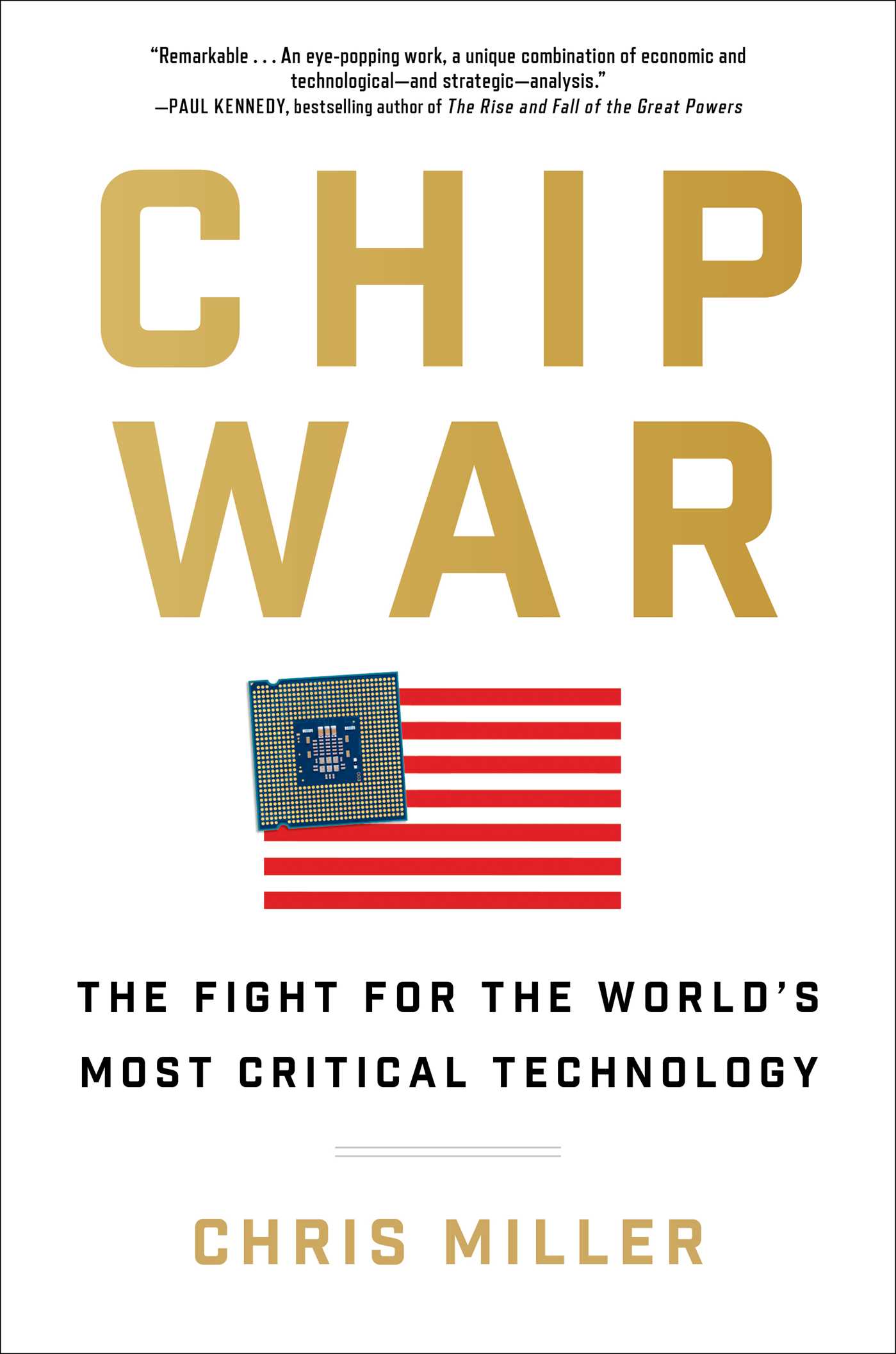
Artificial Intelligence
Technology
Society
Co-Intelligence Book Summary
Ethan Mollick
Ethan Mollick explores the rapidly evolving landscape of artificial intelligence, offering insights, frameworks, and strategies for individuals and organizations to thrive in a future where AI becomes an increasingly powerful collaborator and competitor in domains from creativity to education to work itself.
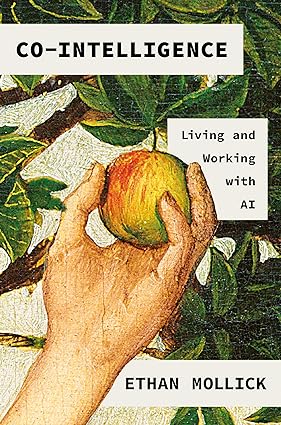
Psychology
Entrepreneurship
Technology
Hooked Book Summary
Nir Eyal
Hooked provides a practical framework for designing habit-forming products that solve users' problems and improve their lives, while cautioning against the ethical risks of misapplying persuasive technology.
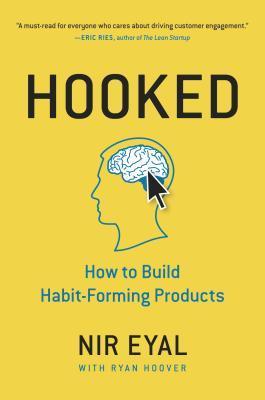
Business
Management
Technology
Crossing the Chasm Book Summary
Geoffrey Moore
"Crossing the Chasm" unveils the hidden challenges of launching disruptive technologies and provides a proven roadmap for navigating the treacherous gap between early adopters and mainstream markets, enabling companies to achieve market leadership and sustainable growth.
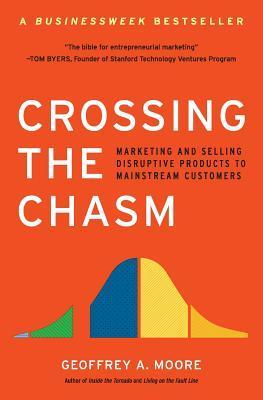
Entrepreneurship
Business
Management
Technology
Zero to One Book Summary
Peter Thiel
Zero to One is a contrarian and insightful guide to creating the future through building innovative companies that escape competition and push technology forward.
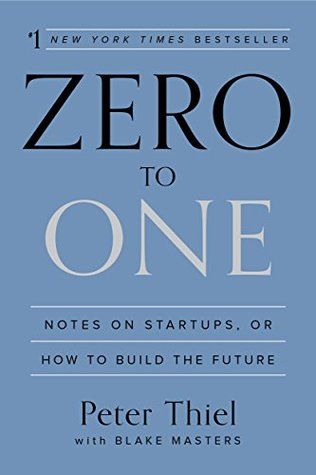
Futurism
Technology
Humanity
Society
Homo Deus Book Summary
Yuval Noah Harari
Homo Deus explores the future of humanity in a world where the old challenges of famine, plague, and war have been largely conquered, and new godlike technologies of artificial intelligence and bioengineering are on the horizon, forcing us to confront fundamental questions about the nature of consciousness, free will, and what it means to be human in an age of algorithms.
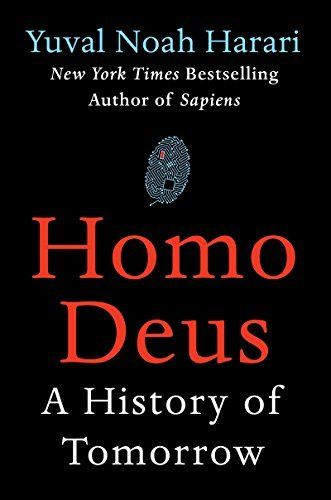
Politics
Economics
Society
Policy
Innovation
Abundance - Book Summary
Ezra Klein, Derek Thompson
Through compelling case studies in housing, energy, government, innovation, and technology deployment, Klein and Thompson argue that our most pressing challenges stem from chosen scarcities rather than natural limits. They outline a framework for building a future with more homes, cleaner energy, better governance, and breakthrough innovations that make life better for everyone.

History
Innovation
Science
Where Good Ideas Come From Book Summary
Steven Johnson
Steven Johnson argues that breakthrough innovations arise from connected environments that enable the serendipitous collision of slow hunches, happy accidents, and novel combinations of existing ideas, rather than isolated eureka moments of lone genius.
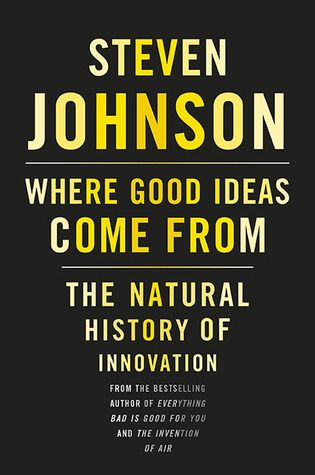
Business
Technology
Management
Inspired Book Summary
Marty Cagan
"Inspired" reveals the essential mindsets, principles and techniques used by leading tech companies to create products that customers love.
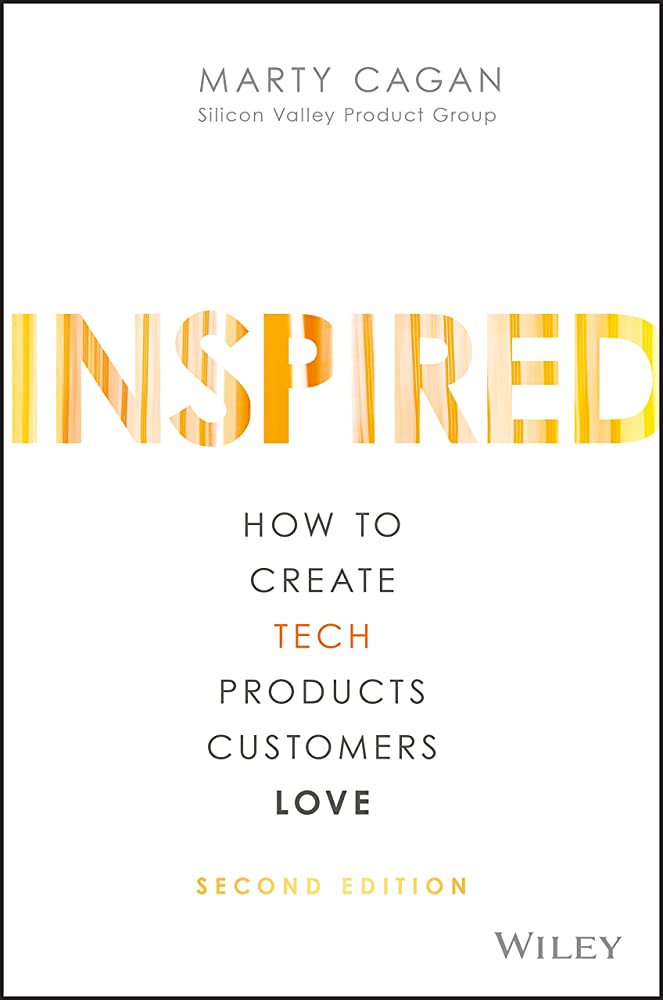
Futurism
Artificial Intelligence
Technology
Computer Science
Power And Prediction Book Summary
Ajay Agrawal, Joshua Gans, Avi Goldfarb
"Power and Prediction" argues that the true potential of AI lies not in automating individual tasks, but in enabling the redesign of entire systems and decision-making processes, which will lead to significant shifts in economic and political power as AI evolves from a tool for prediction into a catalyst for transformation.
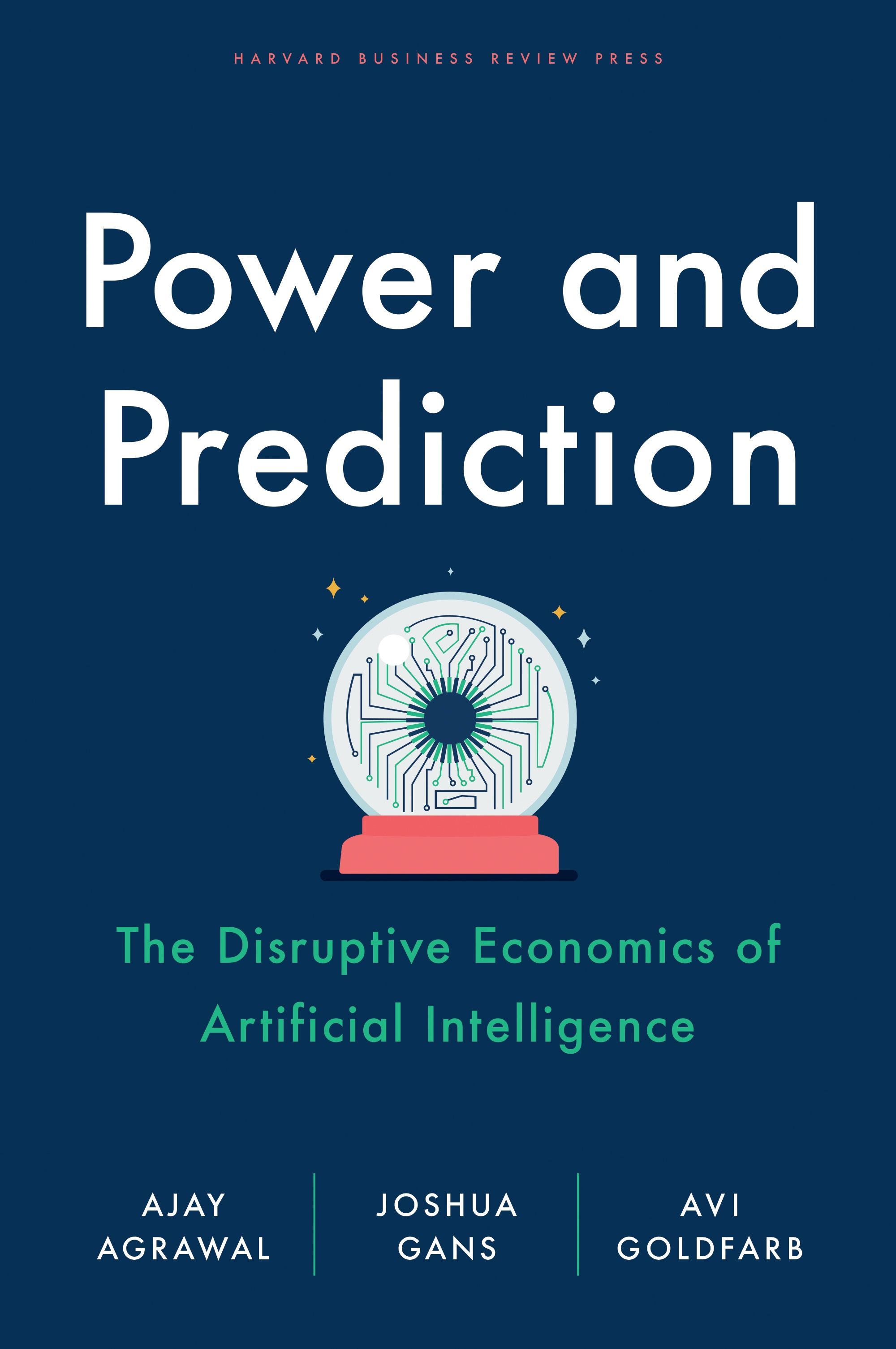
Management
Entrepreneurship
Business
Product Management
Hacking Growth Book Summary
Sean Ellis
Hacking Growth reveals the revolutionary growth hacking techniques used by today's fastest-growing companies to drive breakout success - and shows you exactly how to implement them in your own organization.

Artificial Intelligence
Computer Science
Futurism
The Alignment Problem Book Summary
Brian Christian
The Alignment Problem explores the challenge of ensuring that as artificial intelligence systems grow more sophisticated, they reliably do what we want them to do - and argues that solving this "AI alignment problem" is crucial not only for beneficial AI, but for understanding intelligence and agency more broadly.
